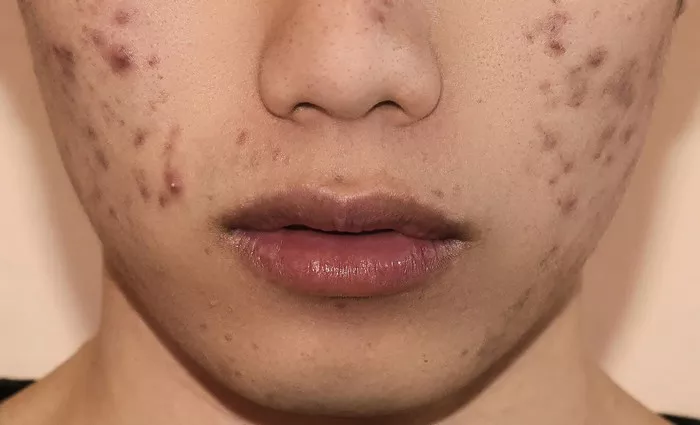Spot scars, also known as acne scars or hyperpigmentation, are a common skin concern affecting millions of individuals worldwide. These scars can be distressing, affecting not only one’s physical appearance but also their self-esteem and confidence. Fortunately, advancements in dermatology have led to a variety of treatment options to address spot scars effectively. In this article, we will explore the causes of spot scars, the different types, and the most effective treatments available today.
Causes of Spot Scars
Spot scars can develop as a result of various factors, including:
Acne: Acne is a prevalent skin condition characterized by the formation of pimples, blackheads, and whiteheads. When acne lesions penetrate deep into the skin, they can damage the underlying tissue, leading to the formation of scars.
Inflammation: Inflammatory skin conditions such as eczema or psoriasis can cause irritation and inflammation, which may result in post-inflammatory hyperpigmentation (PIH) or scars.
Trauma: Physical trauma to the skin, such as cuts, burns, or insect bites, can also lead to the formation of scars.
Genetics: Some individuals may be more predisposed to developing scars due to their genetic makeup. Factors such as skin type, ethnicity, and family history can influence the likelihood of scar formation.
Types of Spot Scars
Spot scars can manifest in various forms, each with its own characteristics and appearance:
Atrophic Scars: Atrophic scars are characterized by a loss of tissue, resulting in depressions or indentations in the skin. These include icepick, boxcar, and rolling scars, which differ in shape and depth.
Hypertrophic Scars: Hypertrophic scars are raised, firm masses of scar tissue that develop at the site of injury. Unlike keloid scars, which extend beyond the boundaries of the original wound, hypertrophic scars remain confined to the injured area.
PIH (Post-Inflammatory Hyperpigmentation): PIH occurs when areas of inflammation or injury darken and discolor the skin. This type of spot scar is more common in individuals with darker skin tones and can persist for months or even years after the initial injury has healed.
Keloid Scars: Keloid scars are thick, raised scars that extend beyond the borders of the original wound. These scars result from an overproduction of collagen during the healing process and are more common in individuals with darker skin tones.
Treatment Options for Spot Scars
The treatment of spot scars often requires a multifaceted approach tailored to the individual’s specific needs and skin type. Some of the most effective treatment options include:
Topical Treatments: Topical treatments such as retinoids, hydroquinone, and vitamin C serums can help improve the appearance of spot scars by promoting cell turnover, reducing inflammation, and inhibiting melanin production.
Chemical Peels: Chemical peels involve the application of a chemical solution to the skin, which exfoliates the outer layers and stimulates collagen production. This can help improve the texture and tone of the skin, reducing the appearance of spot scars over time.
Microneedling: Microneedling, also known as collagen induction therapy, involves the use of small needles to create micro-injuries in the skin. This stimulates the body’s natural healing response, leading to increased collagen production and smoother, more even skin texture.
Laser Therapy: Laser therapy utilizes focused beams of light to target and break down scar tissue, promoting collagen remodeling and skin rejuvenation. Different types of lasers, such as fractional laser resurfacing and intense pulsed light (IPL) therapy, can be used depending on the type and severity of the spot scars.
Dermal Fillers: Dermal fillers containing hyaluronic acid or collagen can be injected into atrophic scars to temporarily plump up the skin and reduce the appearance of depressions or indentations.
Surgical Excision: In cases of severe or stubborn spot scars, surgical excision may be necessary to remove the scar tissue and restore a smoother skin surface. This option is typically reserved for keloid or hypertrophic scars that do not respond to other treatments.
Prevention Tips
While spot scars can be challenging to treat, there are several steps individuals can take to prevent their formation:
Early Treatment of Acne: Prompt and effective treatment of acne can help minimize the risk of developing spot scars. This may include topical medications, oral medications, or procedures such as acne surgery or corticosteroid injections.
Sun Protection: Sun exposure can exacerbate spot scars and cause them to darken further. To prevent this, it is essential to use sunscreen with a high SPF and to wear protective clothing when spending time outdoors.
Avoiding Picking or Squeezing Pimples: Picking or squeezing pimples can increase inflammation and damage the skin, leading to the formation of scars. It is crucial to resist the urge to touch or manipulate acne lesions and to adopt a gentle skincare routine instead.
Moisturization: Keeping the skin well-hydrated can help promote healing and reduce the risk of scar formation. Using a moisturizer that is non-comedogenic and suitable for your skin type can help maintain the skin’s natural barrier function.
Healthy Lifestyle Choices: Eating a balanced diet, exercising regularly, and managing stress can all contribute to overall skin health and resilience. These lifestyle factors can help support the skin’s natural healing processes and reduce the likelihood of developing spot scars.
Conclusion
Spot scars can have a significant impact on both physical appearance and emotional well-being. However, with advances in dermatological research and treatment modalities, effective solutions are available to address these concerns. By understanding the causes of spot scars, recognizing the different types, and implementing preventive measures, individuals can take proactive steps to achieve smoother, more radiant skin. Consulting with a board-certified dermatologist is essential to develop a personalized treatment plan tailored to individual needs and goals. With the right approach, spot scars can be successfully treated, restoring confidence and improving quality of life.
[inline_related_posts title=”You Might Be Interested In” title_align=”left” style=”list” number=”6″ align=”none” ids=”8605,8601,8516″ by=”categories” orderby=”rand” order=”DESC” hide_thumb=”no” thumb_right=”no” views=”no” date=”yes” grid_columns=”2″ post_type=”” tax=””]

































